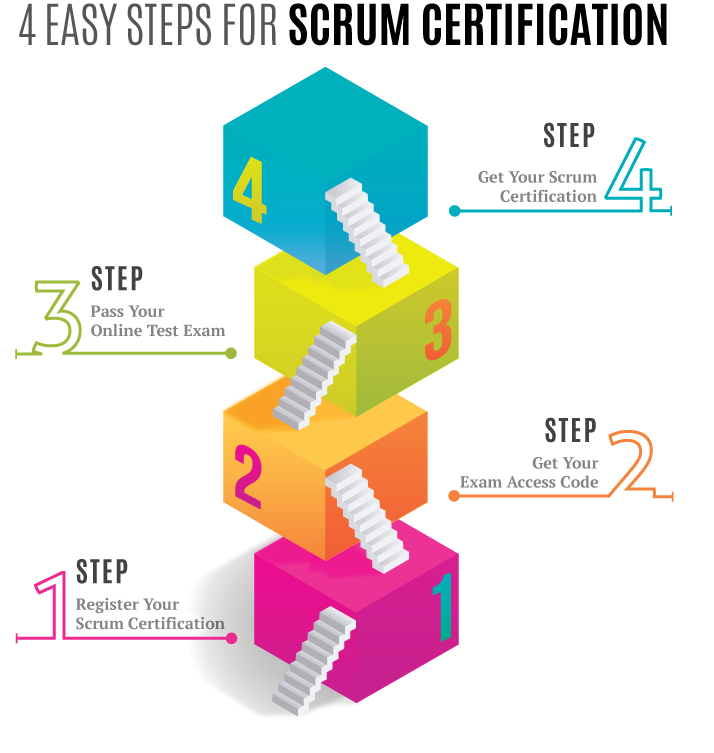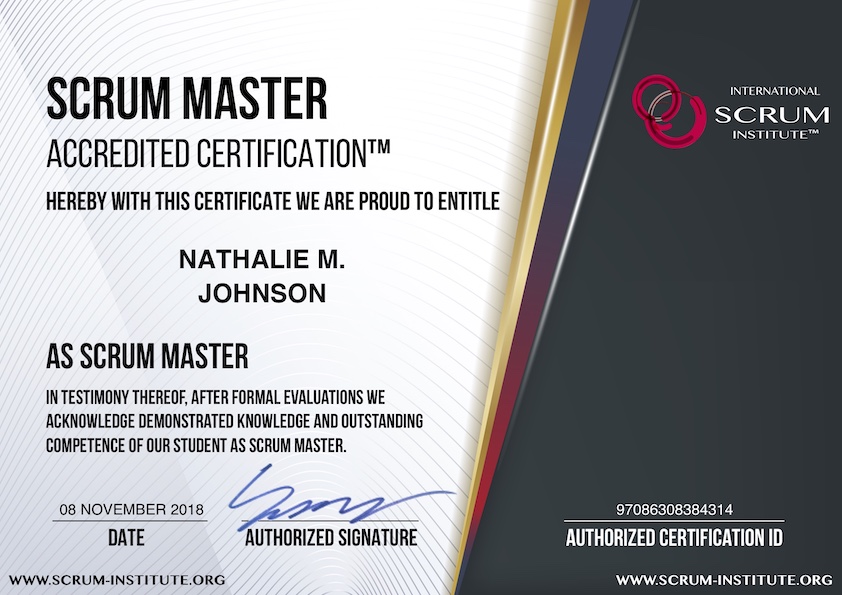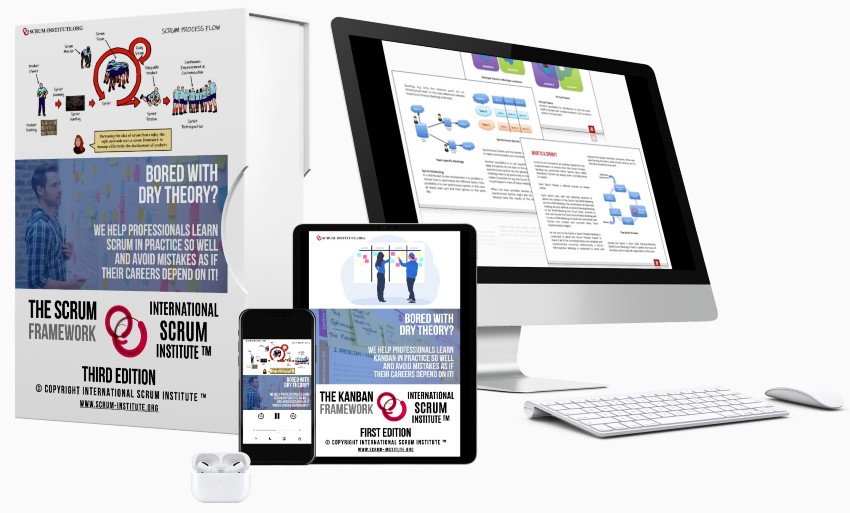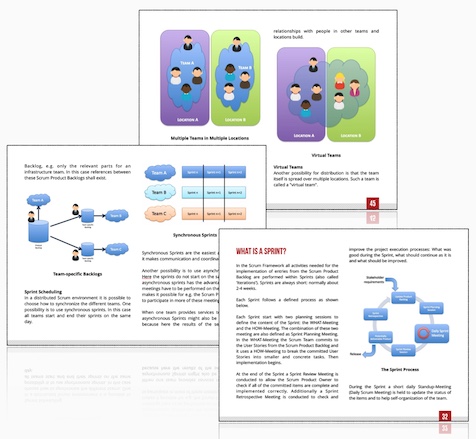Scrum Effort Estimation: A Guide of Best Estimation Techniques for Agile Scrum Teams
Estimating effort in Scrum involves assigning a measure of size or time to a task. This foresight allows for an informed guesstimate of the work required to complete it. Techniques like Planning Poker, Story Points, or Ideal Days are commonly utilized tools in any scrum master's arsenal for this purpose. While these methods may soon come as second nature for seasoned agile teams, beginners might find them as puzzling as complex riddles. On your next scavenger hunt toward Scrum Mastery, your first clue lies hidden within 'Relative Sizing and Story Points'.
When estimating effort in Scrum, teams often use techniques such as Planning Poker® to collaboratively assign relative sizes to user stories. This allows for a more accurate understanding of the work involved and promotes team consensus on task complexity. Remember, the goal of effort estimation is not precision but rather to facilitate planning and decision-making.
 Scrum Effort Estimation
Scrum Effort Estimation
Estimating Effort in a Scrum Team
Effort estimation is a crucial aspect of a Scrum team’s planning process. It aids in setting realistic expectations for the workload associated with completing user stories or tasks. By assigning relative size or time values to each task, the team can make informed decisions about their capacity and plan sprints more effectively.
One popular technique used in Scrum teams for effort estimation is Planning Poker. This engaging method allows team members to collectively estimate the complexity of a task. Each team member selects a card with a number representing their estimate, based on their understanding of the task. By discussing the differences in estimates, the team can gain valuable insights and reach a consensus on the effort required.
For instance, if a team member assigns a larger number to a task while another assigns a smaller one, it prompts a discussion where they share their perspectives and reasoning behind their estimates. This not only leads to better understanding but also promotes collaboration and alignment within the team.
Another effective technique for effort estimation is using Story Points. It involves assigning points to user stories based on their complexity and effort required for implementation. The Fibonacci sequence (1, 2, 3, 5, 8, 13, etc.) is commonly used for assigning story points, with each number representing an increasing level of complexity.
Story points provide a relative measure of effort and help in comparing the work required for different user stories. This method encourages teams to focus on the relative complexity of tasks rather than precise time estimates, allowing for greater flexibility and adaptability in planning and execution.
In addition to these techniques, Scrum teams also utilize Ideal Days as an effort estimation approach. This method involves estimating how many "ideal" days it would take for a task to be completed without any interruptions or external factors impacting productivity. Ideal Days help in providing a tangible sense of effort required, allowing teams to gauge their capacity more effectively.
By breaking down tasks into manageable units and estimating the ideal days needed for their completion, teams can develop a clearer understanding of the effort involved and make more accurate sprint commitments.
Overall, effective effort estimation enables Scrum teams to plan and execute projects with clarity and confidence. It fosters transparency, collaboration, and adaptability within the team, ultimately contributing to the success of Agile project management initiatives.
Having explored the various techniques for estimating effort in Scrum projects, let's now delve into the concept of Relative Sizing and Story Points.
How To Estimate Effort For Stories In The Scrum Framework?
All user stories within the Scrum Product
Backlog have to be estimated to allow the
Scrum Product Owner to prioritize them and
plan releases. That means the Scrum Product
Owner needs a reliable assessment of how much
the delivery of each user story will take.
Nevertheless, it is recommended that the Scrum
Product Owner does not interfere with the
estimations that the Scrum Team performs. So
the Scrum Team delivers its estimates without
feeling any pressure from the Scrum Product
Owner.
The Scrum Framework itself does not prescribe a
way for the Scrum Teams to estimate their work.
The teams who rely on the Scrum Framework do
not deliver their estimates of user stories based
on time or person-day units. Instead, they
provide their estimates by using more
abstract metrics to compare and qualify the
effort required to deliver the user stories.
Common estimation methods include:
- Numeric sizing (1 through 10),
- T-shirt sizes (XS, S, M, L, XL, XXL, XXXL), or
- the Fibonacci sequence (0, 1, 2, 3, 5, 8, 13, 21, 34, etc)

An Example User story
The Scrum Team members must share a
common understanding and consensus of the
unit of estimations they use so that every
member of the team feels and acts comfortable
with it.
Planning Poker® / Scrum Poker
One commonly used method for the estimation
process is to play Planning Poker®: Scrum Planning Poker
When using Planning Poker®, the social proof
influence among the Scrum Team members are
minimal. Therefore, the Scrum Team produces
more accurate estimation results.
What you need to play Planning Poker® game is
straightforward:
- The list of features to be estimated
- Decks of numbered cards.
A typical deck has cards showing the Fibonacci
sequence, including a zero: 0, 1, 2, 3, 5, 8, 13, 21,
34, 55, 89. Other similar progressions are also
possible. The reason for using the Fibonacci
sequence is to reflect the uncertainty in estimating
larger items. It would be a waste of time to
discuss if a user story should have a size of 19, 20
or 21. And yet, it's relatively easier to decide if
the user story fits better to the size 13 or 21.
A high estimate could mean that the Scrum Team
members have not very well understood the user
story yet. So they can attempt to secure extra
capacity for contingency before their commitment
to this user story. Alternatively, that could
also mean that the user story should be broken
down into multiple smaller user stories.
Scrum teams can usually estimate smaller and
clearer user stories with higher confidence.
Finally, the Scrum Team plays Planning Poker®
by adhering the following steps:
- The Scrum Product Owner presents the
story to be estimated. The Scrum Team asks
questions, and the Scrum Product Owner
articulates the user story in more detail. If the
Scrum Team has to assess many user stories,
estimates can be time-boxed in a way that the
Scrum Team does not spend more than a few
minutes for each user story. If the team cannot
still estimate a user story in a given time-box,
then this could be a signal to which the Scrum
Product Owner needs to pay attention. This
signal indicates that either the end-user
requirement or the user story or both of them
are not clear enough, so they need to be
rewritten.
- Each member of the Scrum Team privately
chooses the card representing the estimation.
- After everyone has selected a card, all selections
are revealed.
- People with high and low estimates are asked
to explain their assessment because they may
have thought something that the majority of
the Scrum Team members have been unable
to see.
- Another estimation is done for this particular
user story until the team reaches a consensus
for an estimate.
- The Scrum Team repeats the game until they
estimate all user stories.
Planning Poker® is a registered trademark of
Mountain Goat Software, LLC.
Understanding Relative Sizing and Story Points
In the world of Agile project management, relative sizing is like having your own secret code—the team uses it to understand the complexity and effort involved in completing tasks. The idea is simple: one task estimated at 5 story points will typically be twice as complex as a task estimated at 2 story points.
Relative sizing through story points gives Scrum teams a shared language to understand and communicate about the size and complexity of work. For example, a team may agree that setting up a basic user interface could equal 3 story points while tackling a more complicated feature might equal 8 story points. This method takes into account not just the time it’ll take to complete a task but other factors like the level of risk, uncertainty, and overall complexity. By understanding these measurements within the context of relative sizing, teams can more accurately gauge and allocate effort to various tasks. Each team's estimation serves as a guidepost for how much work can be taken on during a sprint cycle.
Imagine two tasks—one involves implementing a basic feature with limited risk, effort, or complexity; the other involves reworking an entire module with high risk and significant effort required. This is where relative sizing comes in handy. Assigning lower story points to the first task and higher story points to the second helps the team visualize and categorize them in terms of complexity and effort. This then influences planning during sprint cycles, leading to better allocation of resources and time.
Teams commonly use methods like Planning Poker® to assign story points, where each team member privately selects a value for the number of story points they think relates to a particular task based on their individual evaluations. This is followed by group discussion until a consensus is reached. It encourages team collaboration and leverages collective knowledge to estimate more accurately.
Understanding relative sizing and story points is essential for Scrum teams to efficiently plan sprints, distribute effort effectively, and ultimately achieve improved project outcomes based on accurate estimations.
The Advantages of Accurate Effort Estimations
Accurate effort estimations serve as a roadmap for your project, much like how you'd need a reliable map for a long journey, to avoid getting lost in unforeseen delays or hurdles. We'll delve into some key advantages of having precise estimations in agile project management.
- Effective Prioritization and Planning: Accurate effort estimations enable teams to prioritize and plan work effectively. When you know the amount of effort each task requires, you can better allocate resources and time, ensuring that critical items are addressed first and that the project progresses smoothly.
- Managing Stakeholder Expectations: Accurate estimations provide stakeholders with a realistic understanding of project timelines and deliverables. This transparency helps build trust and understanding between the team and stakeholders, reducing disappointment due to missed deadlines.
- Enhancing Transparency: Accurate estimations foster transparency within the project, allowing team members to understand the efforts involved in each task, make well-informed decisions about their workflow, dependencies, and potential bottlenecks.
- Improved Collaboration and Trust: Effective effort estimations promote better collaboration and trust among team members and stakeholders. Confidence in the estimates leads to improved decision-making and a positive impact on the overall morale of the team while aligning everyone's expectations with realistic project requirements.
- Successful Project Deliveries: Accurate effort estimations significantly contribute to successful project deliveries by providing a clear understanding of what's needed and how long it will take. They enable teams to manage risks, identify issues early on, and ensure smooth execution throughout the project lifecycle.
In essence, accurate effort estimations play a crucial role in streamlining project management processes, fostering collaboration, and ensuring successful project outcomes. A reliable estimation framework is indeed the cornerstone of effective agile project management.
With an understanding of the importance of accurate effort estimations in agile projects, let's now move on to explore an overview of the Scrum estimation process.
An Overview of the Scrum Estimation Process
Sprint Planning marks the initial phase. During this stage, the Scrum Team collaborates to determine the work achievable within the upcoming Sprint. When it comes to estimation, their task is to collectively gauge the effort required for each task. This prevents last-minute surprises or unrealistic expectations and ensures that everyone—team members, stakeholders, and clients—is on the same page regarding what can realistically be achieved within a given time frame.
In these sessions, Scrum Teams utilize a variety of estimation techniques, such as Planning Poker or Story Points, to establish the effort needed for each task. This is crucial because it enables teams to break down complex tasks into smaller, more manageable units. These techniques incorporate diverse perspectives from team members, ensuring greater accuracy in assessing the overall work involved.
Let's say we have a big project involving multiple tasks with varying levels of complexity. By using these estimation techniques, the team breaks down each major task into smaller ones and assigns corresponding story points. This aids in gauging how much time and effort each smaller task might require. It's akin to tackling a large puzzle—breaking it into smaller pieces provides a clearer idea of where to start and how long it might take to complete each part.
Furthermore, breaking down work into smaller units during estimation assists in resource allocation. If a member has extensive experience with one aspect of the project or is well-versed in certain technology, this insight can be utilized for effectively assigning tasks based on expertise and ensuring an even distribution across the team.
With everyone committed to achieving Sprint goals and tasks assigned based on individual strengths and expertise, the Scrum estimation process ensures that the team remains dedicated. Now that we've looked at how the process sets the stage for successful project execution, let's move on to explore additional benefits it offers.
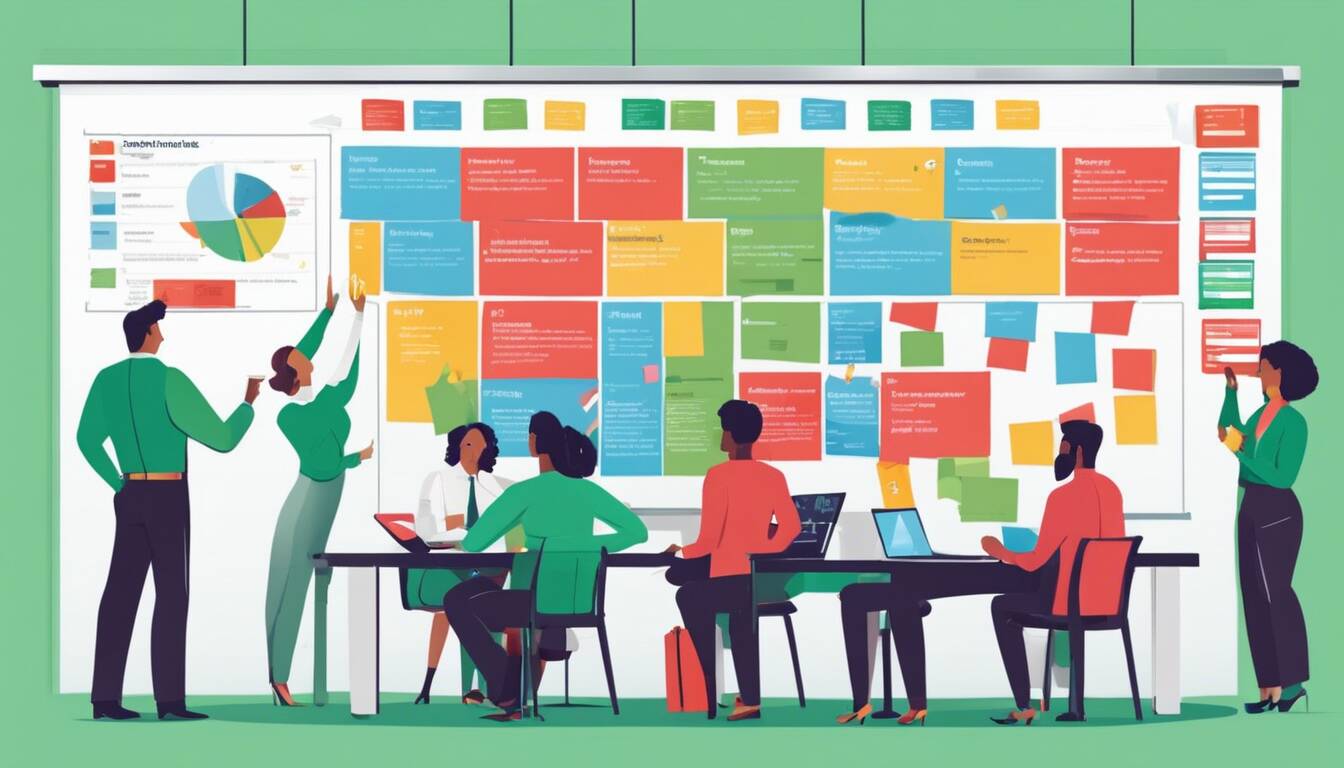 Scrum Effort Estimation In Agile Projects
Scrum Effort Estimation In Agile Projects
How to Refine Effort Estimations Over Time
When it comes to refining effort estimations in Agile project management, the key is continuous improvement. One way to refine your estimates over time is by using historical data and feedback from completed projects.
If you keep track of your past Scrum sprints and the work that was completed during those sprints, you can use this data to improve future estimations. This approach helps in identifying patterns and trends in the team's performance and allows for better assessment of future work.
Another effective way to refine estimations is by evaluating the accuracy of previous estimate forecasts. By comparing the original estimates with the actual effort expended on tasks, teams can identify areas where their estimations were off and learn from those situations.
It's important to note that this process should not be about placing blame. Instead, it should be viewed as an opportunity for learning and growth. Understanding why an estimate was off can provide valuable insights that can be used to refine future efforts.
For instance, if a particular task took longer than estimated, it's crucial to investigate the reasons behind it. Was there a change in requirements? Did the team encounter unforeseen technical challenges? By gathering this information, teams can adjust their future estimates to account for similar situations.
It's similar to learning from experience in other aspects of life. Just like a chef who uses past experiences with recipes to refine their cooking skills, a Scrum team uses past project data to improve their estimation accuracy.
More advanced teams may employ statistical methods such as Monte Carlo simulations or Bayesian analysis to refine their estimations over time. These techniques take historical data, variance, and uncertainty into account for more accurate predictions.
By constantly analyzing past performance data, evaluating the accuracy of previous estimates, and incorporating new insights into future estimations, Scrum teams are able to enhance their forecasting abilities and deliver value more predictably.
With a robust understanding of how to refine effort estimations over time, let's now delve into the importance of establishing and adapting baseline velocity in Agile project management.
The Importance of Establishing and Adapting Baseline Velocity
Imagine embarking on a long journey. You'd want to know the average speed needed to reach your destination on time, right? Baseline velocity operates on a similar principle in the world of Agile project management. It's like setting a standard pace for your team to ensure they can effectively achieve their sprint goals and deliver quality work consistently.
Baseline velocity is derived from the team's historical performance. It's not just a number; it reflects the unique rhythm at which your team typically operates. By understanding this rhythm, you gain valuable insights into how much work your team can realistically complete within a sprint. This is crucial for effective project planning and the setting of achievable sprint goals.
Example of Baseline Velocity Calculation:
For instance, consider a scenario where a development team successfully completes an average of 25 story points in each sprint, based on their past performance data. This average becomes their baseline velocity—a reference point to guide future estimations and sprint planning.
However, it's essential to recognize that teams evolve over time. New members may join, skill sets may expand, or external factors could impact productivity. Therefore, adapting baseline velocity based on the team's evolving capacity and capabilities is crucial for ensuring that estimations remain relevant and aligned with the team's actual productivity.
Adapting baseline velocity is akin to recalibrating your compass as you navigate through changing terrain during your journey. By acknowledging shifts in team dynamics and skill levels, you can recalibrate your expectations and align them with the team's current capabilities. This proactive approach prevents unrealistic estimations and allows teams to consistently deliver value.
In essence, establishing and adapting baseline velocity isn't just about setting a target; it's about ensuring that your team operates at an optimal pace while continually aligning expectations with their evolving potential.
By establishing and adapting the baseline velocity, Agile teams can enhance their ability to plan sprints effectively, aligned with the team's capacity and ensuring successful delivery. If you want to learn more about Agile project management, check out the Free Resources at International Scrum Institute.
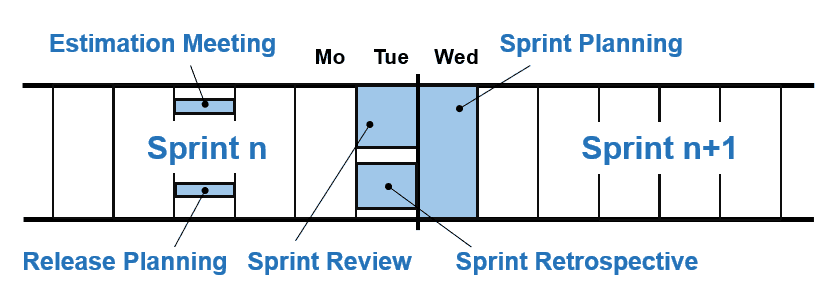 Scrum Effort Estimation During Scrum Events
Scrum Effort Estimation During Scrum Events
What are some common challenges or pitfalls to avoid when estimating effort in a scrum project?
Answer: Some common challenges or pitfalls to avoid when estimating effort in a scrum project include underestimating the complexity of tasks, overreliance on historical data without considering specific project context, and not factoring in team capacity or individual skills. According to a study by McKinsey, inaccurate estimates can result in project delays or cost overrun, highlighting the importance of addressing these challenges early on in the estimation process. Regularly reviewing and adjusting estimates based on actual progress and feedback can help mitigate these challenges.
What factors should be considered when estimating effort in a scrum project?
Answer: When estimating effort in a Scrum project, several factors should be considered. These include the complexity of the tasks, the skill level of the team members involved, the availability and stability of resources, and any dependencies or constraints. Additionally, historical data from previous sprints can be leveraged to improve accuracy. A study by McKinsey found that accurate effort estimation improves project success rates by up to 70%. Therefore, thorough consideration of these factors is crucial for effective planning and successful project execution in Scrum.
What are the different methods or techniques for scrum effort estimation?
Answer: The book explores various methods for scrum effort estimation, including Planning Poker, T-shirt sizing, and the Fibonacci sequence. Planning Poker is a collaborative approach that helps teams estimate effort by assigning points to user stories. T-shirt sizing provides a quick and simple way to estimate by categorizing tasks into small, medium, large, or extra-large sizes. The Fibonacci sequence assigns relative values to user stories based on complexity, allowing for more accurate estimation. These techniques have been widely used in agile project management and have shown to improve accuracy in estimating project effort.
Is it possible to improve the accuracy of scrum effort estimations over time?
Answer: Yes, it is possible to improve the accuracy of scrum effort estimations over time. As Scrum Teams gain more experience and knowledge about their work, they become better at estimating the effort required for different tasks. According to a survey conducted by Agile Alliance, teams that had been practicing Scrum for two or more years reported significantly improved accuracy in their estimations, with 75% of them achieving estimates within a range of +/- 10% of the actual effort expended. This improvement can be attributed to continuous learning, retrospective analysis, and the refinement of estimation techniques within the team.
How accurate are scrum effort estimations in practice?
Answer: Scrum effort estimations, in practice, can vary in accuracy due to several factors. One important factor is the level of experience and expertise of the team members involved in the estimation process. Estimations tend to improve over time as the team becomes more familiar with the project's complexities. Additionally, incorporating historical data from previous projects and tracking actual effort spent can enhance accuracy. However, it is crucial to note that effort estimations are still prone to uncertainties and unexpected challenges, making them inherently imperfect. According to a study by Li et al., agile teams achieve estimation accuracy ranging from 60% to 83%, indicating both the potential and limitations of scrum effort estimations in practice.
What is effort estimation in Agile?
Answer: Effort estimation in Agile involves assessing the amount of work required to complete a product backlog item, often measured in story points or hours. This estimation is a crucial aspect of Agile project management, aligning with Agile principles such as responsiveness to change, collaboration, and delivering value to the customer.
During the Agile planning process, teams break down the product backlog into smaller, manageable items. Estimation is not a one-size-fits-all approach, and different teams may use varying methods, including story points or hours. Story points are a relative measure reflecting the complexity and effort involved in a particular item, providing a more abstract metric than hours.
One common way to perform effort estimation is through a planning poker meeting. In this collaborative session, developers discuss each backlog item, considering technical intricacies, dependencies, and potential challenges. They assign story points or estimate hours based on their expertise and collective understanding. This expert judgment helps account for nuances that may not be apparent at first glance.
Agile teams prioritize flexibility, and effort estimation aligns with this principle by allowing for adjustments as the project progresses. The initial estimates serve as a guideline, and teams refine them as they gain more insights and as the product backlog evolves.
Effort estimation scales with the size and complexity of the project. Larger projects may require more granular estimations, involving breaking down backlog items into even smaller tasks. Continuous communication among team members is essential to ensure that everyone has a shared understanding of the details, avoiding misunderstandings that could impact the overall project timeline.
While some Agile teams prefer story points as a more abstract measure, others convert these points into hours to provide a tangible metric for time-sensitive projects. The flexibility of Agile allows teams to choose the approach that suits their needs best.
In summary, effort estimation in Agile is a collaborative process where team members use their expert judgment to assign story points or hours to product backlog items during planning poker meetings. The process aligns with Agile principles by emphasizing flexibility, continuous communication, and a focus on delivering value to the customer.
Scrum Effort Estimation Recap
The article on Scrum Effort Estimations delves into the crucial aspects of estimating work in an Agile development environment. It emphasizes the significance of adhering to Scrum principles and highlights the iterative nature of estimating, wherein the team continually refines their understanding and predictions. During the sprint planning meeting, the team discusses product backlog items, breaking them down into smaller tasks or stories, assigning story points, and estimating the effort required in terms of hours or days. These estimates are not fixed and may change as the team gains more insights, and expert judgment plays a key role in refining the numbers.
The way Scrum teams estimate effort is through story points, a relative scale that allows for a more abstract and flexible approach compared to traditional hours-based estimation. Each product backlog item is assigned a story point value, representing the perceived complexity and effort required. This approach enables a more collaborative effort, as developers collectively contribute their insights and expertise to arrive at a consensus. The article underscores the importance of considering various factors, such as dependencies, uncertainties, and team velocity, in estimating efforts accurately. In doing so, the Scrum team avoids fixating on specific hours and embraces a more adaptable and iterative approach to meet the dynamic nature of software development.
In scaling Scrum effort estimations, the article suggests considering the bigger picture while estimating the effort required for a product backlog item. It encourages teams to look beyond the immediate details and evaluate how the estimated effort aligns with the overall project timeline and goals. The iterative and collaborative nature of estimating in Scrum allows for continuous improvement and learning from past estimations. By embracing the principles of transparency and inspection, Scrum teams can refine their estimation processes, learn from others, and enhance their ability to deliver high-quality products within the defined timelines.
Share It With Your Colleagues and Friends to Help Them Learn:
Scrum Effort Estimation: Best Techniques for Agile
|
|

|

|

|

|
|
 SCRUM INSTITUTE™
SCRUM INSTITUTE™




